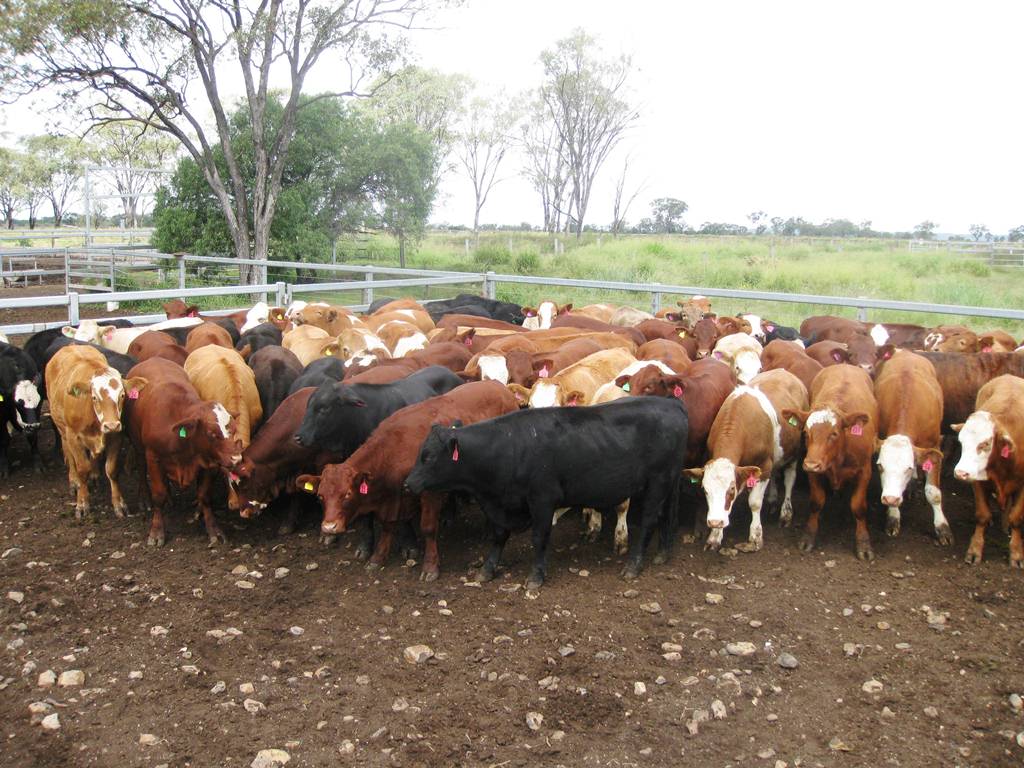FERTILITY is a key profit driver for the northern beef industry and the right genetics can fast-track a herd’s reproductive performance and, as a result, profitability.
Department of Agriculture FutureBeef extension officer based at Roma, Tim Emery, took commercial producers back to the basics of how to tap into genetic potential at a Pastoral Profit workshop, underpinned by Meat & Livestock Australia, held at Bollon in south-west Queensland recently.

Tim Emery
While the drought has taken its toll on Queensland’s beef herd, the silver lining is the opportunity to use the current herd rebuilding phase to review genetic and management strategies.
“It is well known that nutrition plays a big factor in influencing reproduction, along with health and disease, however the latest research is showing the impact of underlying genetic control and that through selection, things such as weaning rate can be improved,” Mr Emery said.
“Within the industry now, there are bulls that are highly likely to drive a herd the right way, and others that will do the opposite. It’s recommended to make use of all the tools available to make more informed, objective decisions.”
Mr Emery said producers can take simple steps to wisely invest in genetics for their enterprise targets and business profitability.
Review or develop breeding objectives for the business: Assess where your herd is at now (be objective) and where you want to be. Consider target market and environmental constraints. Have a written and attainable plan for the genetic direction of the enterprise, and ensure everyone in the business is on the same page.
Identify and select for traits that actually stack up: The traits you are selecting for must be measurable, heritable, have variation in the trait and truly put dollars in your back pocket. Research projects from the Beef CRC and Beef Information Nucleus clearly demonstrate the big differences between sires’ daughters’ reproductive performance and the opportunity that exists to be selecting for superior genetics and not inferior.
Make use of proven, readily available tools: Seedstock and commercial producers can use Estimated Breeding Values to estimate an animal’s genetic merit for particular traits. Using EBVs essentially removes the guesswork from the genetic direction being taken in a herd. EBVs have demonstrated proof of profit in research and producer herds for fertility, growth and carcase traits. Producers can view EBVs online and use various functions, such as search/sort catalogue, to quickly identify the animals that are genetically suitable for their requirements.
Things to consider when looking at EBVs
- Selection should be based on a balance of traits and not solely focused on a single trait.
- Buying a bull with superior fertility traits (scrotal size and days-to-calving) can positively influence the future reproductive performance of his daughters.
- In buying a bull to use over maiden heifers, reduce the risk of calving difficulties by paying close attention to calving ease, gestation length and birth weight.
- The EBVs for the animal in question should be compared against the current breed average (this is currently the average for calves born in 2014).
- Figures can be expressed as positive, negative or zero – but negative figures don’t always mean undesirable. In the case of the days-to-calving fertility trait, a more negative figure is highly desirable.
- The accuracy of EBVs increases as more data is measured on the individual animal, its progeny and its relatives, and is influenced by heritability, contemporary group size and genetic correlations. Once accuracy figures are 90pc plus, it’s unlikely the EBV will change much with the addition of more progeny data.
- To access EBVs, visit either the Breedplan website or follow links on breed society websites (EBVs cannot be compared across breeds).
Is the bull up to the job?
“In purchasing a bull, you’re simply buying a package of genes,” Mr Emery told the recent Pastoral Profit workshop.
“In order to be able to pass on these genetics though, the bull must first be fertile.”
To know the level of risk associated with using a particular bull, a full evaluation is recommended for bulls prior to purchase and current sires, annually, before joining. A veterinary bull breeding soundness evaluation, or BullCheck, identifies risk factors for a bull’s potential to be fertile in the future using a set of standards developed by the Australia Cattle Veterinarians.
Don’t forget mum
While bulls have the biggest influence on driving the genetic direction within a herd, and ultimately profitability for the next 10 to15 years, it’s also important to identify genetically superior females within the herd that are doing their job year-in, year-out.
This can be done by:
- Recording the reproductive performance of all females individually on an annual basis and culling accordingly.
- Retaining progeny from the superior animals so benefits flow through to the bottom line.
- Asking the seedstock producer to provide information about bulls such as when their mother first calved, how many calves she has had and when.
More information:
Tropical Beef Technical Services: Information on better understanding EBVs and breeding for fertility.
FutureBeef: Information on breeding and genetics.
Breedplan: Breedplan produces Estimated Breeding Values (EBVs) for cattle for a range of important production traits.
MLA’s genetics and breeding program: MLA invests up to $5 million a year in livestock genetics R&D to facilitate increased genetic gain and adoption with the aim of boosting profitability.

Source: MLA
